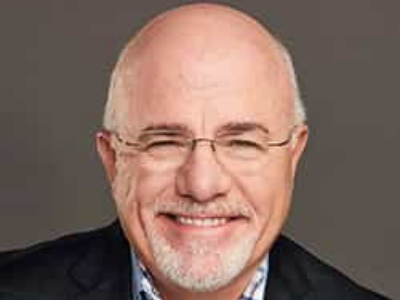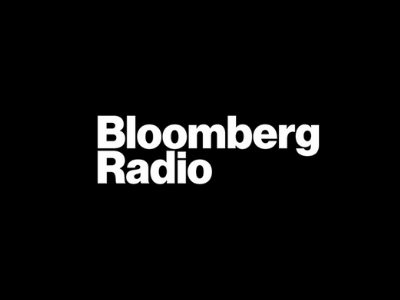Wallets scream louder than kids this Halloween
News > Personal Finance News

Audio By Carbonatix
8:00 PM on Sunday, October 5
By Bella Bucchiotti
While Americans across the country cut back on spending, spooky season is still going strong: 75% of adults say they plan to do something for Halloween. More than half will spend the same amount as last year, while another 22% will increase their budget. But they may get less boo for their bucks thanks to inflation, tariffs and cocoa bean prices.
The screams and squeals of their kids are music to most parents' ears when October arrives. But this year, the adults have much more to fear. While they want to give their families the best Halloween they can, they're scared they literally may not be able to afford it. A few see no alternative.
"Halloween has definitely become our biggest fall expense, but with two school-aged kids, cutting back just isn't realistic. They look forward to picking out costumes for school events and trick-or-treating all year, and we always add several new pieces to our Halloween decorations to keep the holiday fun," explains Tamara Tsaturyan, founder of Thriving In Parenting. "Prices on costumes and candy do feel higher year over year, but even with that, we'd rather stretch our budget than miss out on the excitement."
Starting early
Halloween spending spiked at $12.2 billion in 2023, dropping off $600 million last year. The National Retail Federation has yet to publish their estimates for 2025, although the Television Bureau of Advertising projects Americans will spend an overly optimistic $15 billion this year.
Halloween and Christmas arrive earlier every year at your favorite retailers. Target led the charge, dropping Halloween decorations online in May, with most other stores stocking up in August. And while the anticipated higher import fees are causing some of the advance planning, more than half of 25-34 year olds plan to shop early. Millennials are also more likely to celebrate spooky season and spend more on it, justifying shops' expanding the buying cycle for the holiday.
"Every year, Halloween falls in the same precarious place on the calendar. The popular day occurs between the two largest retail shopping events of the year: back-to-school and holiday," points out Chip West, retail and consumer behavior expert at RR Donnelley. "Since much of consumer purchasing that takes place for back-to-school and holiday is with discretionary dollars, household budgets are often stressed at Halloween."
Mom of three and director of family finance and education at Greenlight, Jennifer Seitz adds, "Halloween has also evolved into more than just a one-night activity. Families are juggling multiple school events, neighborhood trick-or-treating and friend group celebrations, which can sometimes mean kids want to wear more than one costume. Social media can add unnecessary pressure for teens, too, with many feeling a costume is only ‘Instagrammable' once."
"This year I'm noticing families are being more strategic with their Halloween spending," agrees Rakuten Saving Strategist Ashley Feinstein Gerstley. "I've noticed more people are focusing on Halloween planning and shopping earlier this year. Going in with a plan and giving yourself time are good strategies. One of the most common spending mistakes I see with most holidays is that when we wait until the last minute, we then have to buy whatever is available, often at full price."
Under the mask
The Halloween and Costume Association warns proposed tariffs could double the price of costumes, and potentially cripple Christmas celebrations. Twice now, the federal government has delayed enacting the higher import fees, capping tariffs at 30%, but when and if they do go into effect, U.S. prices for Chinese goods would jump 145% or more.
HalloweenCostumes.com 's 2025 Halloween Survey found 72% of those surveyed say costume participation is the same or increasing, despite the rising costs. Many of these, however, have found new ways to avoid more expensive options.
Gerstley's informal social media poll found, "Forty-one percent of my audience on Instagram shared that they are reducing spending by buying accessories instead of full costumes, going with DIY options or making costumes with DIY touches."
Another creative idea is to do full or partial costume swaps. Sisters or cousins can trade princess dresses. Or it might be the puppy's turn to wear a crown. A scepter can be repurposed into a sword or a magic wand. A tricorn hat suits Jack Sparrow, Benjamin Franklin or Captain Hook. Etsy can be a good source for full costumes or preferred pieces.
"Many families are finding thrifty ways to celebrate on a budget, like making DIY costumes, swapping or reusing instead of buying, or splitting bulk candy costs with neighbors," adds Seitz.
As long as you're splitting the candy costs, why not engage with the whole neighborhood? Friday night trick-or-treating can become a Halloween block party. Some families provide stomach-warming chili, others rice or cornbread, or heartwarming Fireball-infused Halloween jello shots for the adults.
Cocoa a no go?
While inflation and tariffs are driving the cost of some Halloween staples up, candy is in a class all its own. Yes, as a food commodity that is largely imported, it is affected by those cost add-ons. Even worse, other factors have driven prices higher even before they reach our shores.
In 2022, a metric ton of chocolate cost around $2,000. This year, due to weather conditions, crop diseases and increased demand from other countries, American chocolate makers are paying more than $10,000. Experts say with new environmental laws and better wages for farmers, this will only increase, even if they don't take tariffs into account.
Sugar is also riding a wave of cost increases, a bump of 5% more since this time last year. And Americans already pay more than double the global rate for organic and refined sugars.
Hershey, the makers of many of the most popular chocolate candies, including Reese's, Kit Kat and York Peppermint Patties, pledged not to raise prices on their Halloween packaged treats. Regular retail prices for Hershey products will jump in the next couple of months. Lindt and Nestlé have already passed their costs onto the consumer. One suggestion: less chocolate and more candy corn.
DIY works here, too. Rather than paying a premium for candied apples at the local grocery store, make them at home. As a bonus, you can take the kids to a local farm to pick their own apples and pumpkins.
Price and participation may vary
Across the board, Halloween costs are skyrocketing, making it a much more expensive holiday. That's even as it's embraced more by millennials and Gen Zers who want their kids to have bigger and more memorable experiences. They may have to adjust their expectations.
"Consumers are savvy and know there is much uncertainty with ever-changing trade agreements. They also feel that more price increases are likely to occur later in the year," points out West.
The ongoing threat of tariffs and progressively rising inflation will continue to plague families who can't get a handle on their budgets and expenses. Christmas is right around the corner, a holiday families spend 10 times as much on, even if it means paying for it for six more months.
"Use financial tools to teach kids about budgeting," Seitz suggests. "… we see families using tools like spending categories and savings goals to set limits, track purchases in real time and help kids understand how holiday costs like costumes, candy and decorations can add up quickly." The more kids understand, the less likely they are to get upset when you can't afford everything they'd like to have.
Bella Bucchiotti is a freelance writer with a passion for adventure, delicious recipes and authentic storytelling. Through xoxoBella and social media, she shares vibrant travel experiences, mouthwatering dishes and everyday moments that inspire connection.





